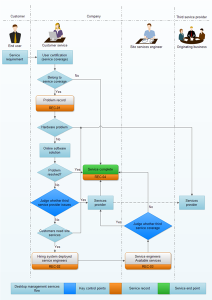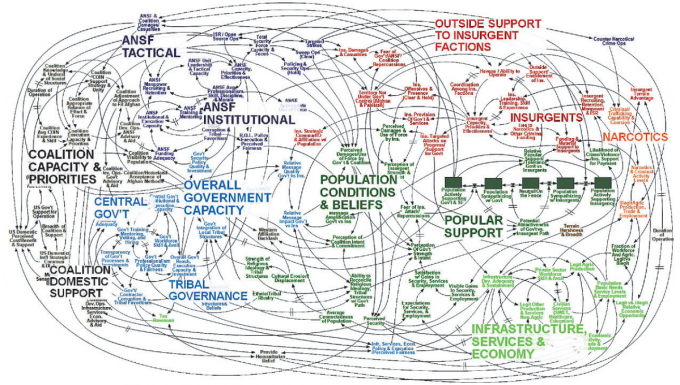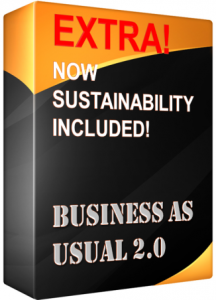
Have you also heard the cliché one time to many…?
I suppose it is some kind of human urge – to box things in or to put them in silos.
Maybe it is some kind of unconsciously hidden “Taylorism” deep inside of us just urging to put everything in a framework or maybe it is our ancestral way to deal with complexity…
… I don’t know for sure, but we are really keen at it – aren’t we…
…and it is not only about work, we box everything in – it sort of makes things easier to grasp, to “make sweeping statements” about and to set “rules” applicable on everything or everybody in a specific box or silo. One very interesting thing about this “boxing in” though, is that almost as soon as a box or silo is defined, comes a wish to “Think outside of it”…
“… I don’t think limits.”
– Usain Bolt
Boxes and Silos are terrific solutions to avoid “outside interference” – I think it was one reason they were invented in the first place – to keep things in order inside and to protect from outside…
Given these properties, it is rather fascinating that boxes and silos are so often used as metaphors when describing how corporations and other organisations are set up.
It is amazing that Taylorism or “Scientific Management”, which dates back a century still has such influence, and although the basic ideas have evolved to later methods such as “lean manufacturing”, the frequent use still today of “Box” and “Silo” as metaphors, indicates that – “The risk of fossilizing one moment’s technological state into cultural inertia that stifles disruptive innovation” – still is very much an issue.
What happens with all our “Boxes” and “Silos” – our detailed documentation of workflows and processes, quality certifications etc. when we need to move quickly into a different, more complex era…
Complicated is not equal to Complex
In today’s more and more interconnected and complex global society I often get the impression that many people and corporations are trying to make a “Hot swap”, exchanging the word “Complicated” with the word “Complex”…
Before discussing this issue, let’s have a brief look at the differences.
I have borrowed the following descriptions from the blog of Professor Larry Cuban.
(Read the full blog-post Here)
– Complicated Systems –
 A complicated system assumes experts and rational leaders, top-down planning, smooth implementation of policies, and a clock-like organization that runs smoothly. Work is specified and delegated to particular units.
A complicated system assumes experts and rational leaders, top-down planning, smooth implementation of policies, and a clock-like organization that runs smoothly. Work is specified and delegated to particular units.
Certainty about outcomes is in the air the organization breathes. Complicated systems use the most sophisticated math, technical, and engineering expertise in mapping out flow charts to solve problems.
Examples: Moon-Landing, Nuclear Plants, Production-processes, Computer-systems etc.
– Complex Systems –
Complex systems, however, are filled with hundreds of moving parts, scores of players of varied expertise and independence yet missing a “mission control” that runs all these different parts within an ever-changing political, economic, and societal environment.
 The result: constant adaptations in design and action. Blueprints, technical experts, strategic plans and savvy managers simply are inadequate to get complex systems with thousands of reciprocal ties between people to operate effectively in such constantly changing and unpredictable environments. These web-like complex systems of interdependent units adapt continuously to turbulent surroundings.
The result: constant adaptations in design and action. Blueprints, technical experts, strategic plans and savvy managers simply are inadequate to get complex systems with thousands of reciprocal ties between people to operate effectively in such constantly changing and unpredictable environments. These web-like complex systems of interdependent units adapt continuously to turbulent surroundings.
Examples: Human society, Health-care, Justice system etc.
Sustainability is a Complex issue
 Take Sustainability as an example – many corporations, organisations and individuals for that matter; actually still believe that Sustainability is some kind of “add-on” activity – an upgrade to what’s already defined as “Our way to do business”… or Business-as-usual.
Take Sustainability as an example – many corporations, organisations and individuals for that matter; actually still believe that Sustainability is some kind of “add-on” activity – an upgrade to what’s already defined as “Our way to do business”… or Business-as-usual.
This kind of “hot-swap” – where a process dedicated to solve a Complicated matter, just by changing the “wording”, maybe adjusting some small features and maybe adding some sustainability reporting – then should be equally good at solving a Complex matter can be very deceitful…
Chances that “business-as-usual” already is truly sustainable are very low, in most cases probably close to nil. What might look as a “quick-fix” could then in fact fossilize the current set-up and instead lead the organisation further into a dead end…
Sustainability Reporting is not a solution…
Allen White, Co-Founder and former CEO of the Global Reporting Initiative (GRI), wrote in a recent article in the Guardian:
“Swamped by sustainability indicators that fail to drive transformation”
“Even if companies are taking action to reduce sustainability impacts, they may collectively overstep planetary boundaries”, warns Allen White
Amidst the blizzard of sustainability indicators populating the information marketplace, one issue looms large, complicated and unresolved. How do we know a high performing company when we see one?”
The current over 1.500 Indicators spanning almost 600 issues will by 2015 be over 2.400…
…Disclosure, after all, is a necessary but not sufficient condition for defining excellence. It is the engine that delivers data to the market. But disclosure is a means, not an end.
So – what about Complexity…
Moving from the often quite complicated current reality, with business cultures and processes that have evolved during many decades, to a “new” much more Complex reality is, to say the least, a somewhat scary journey to initiate…
Just think of it – a long time elaborated system with one parameter (Profit) at the bottom line urgently needs to be replaced with a system incorporating three parameters – and although they all need the same, or more, attention we are still struggling to find even the basics in how to handle the two “new” ones – People and Planet…
Larry Cuban summarizes the transition to a complex system in his article:
“At the minimum, know that working in a complex system means adapting to changes, dealing with conflicts, and constant learning. These are natural, not aberrations. Know further that reform designs borrowed from Complicated systems and imposed from the top in Complex systems will hardly make a dent in the daily work of those whose job is convert policy into action.”
Time to Un-Box…
 Forget about the “Fragile”, “Keep Dry” and “This Side Up” signs on the boxes, it’s time to tear the cardboard – to really Un-Box – and while you’re at it put some explosives under the Silos as well…
Forget about the “Fragile”, “Keep Dry” and “This Side Up” signs on the boxes, it’s time to tear the cardboard – to really Un-Box – and while you’re at it put some explosives under the Silos as well…
“Start where we need to be,
not where you are …”
–
Let’s face it, our current procedures and systems deliver, in best case, exactly what has been the goal for many, many years – problem is that we cannot afford to continue destroying our planet and our atmosphere. We cannot continue to exploit people and eradicate species the way we do today.
We need to find a new way!
“You never change things by fighting the existing reality. To change something, build a new model that makes the existing model obsolete.”
― Richard Buckminster Fuller
Making incremental changes to a, from sustainable viewpoint, “dysfunctional” setup is not efficient, is not cost-effective and it puts the business in a “re-active” mode – continuously struggling to meet more and more restrictions and demands that undoubtedly will be triggered by increasing environmental problems, scarcity of resources, economic turmoil etc.
How, ever frightening, it might seem to “Restart” – it is the best way forward.
(In many cases probably the only way.)
Start where you need to be, to be Truly Sustainable, then work your way backward, developing what it’ll take to get there, how to set-up sustainable supply-chains, sourcing for sustainable products and services and so on – this is a pro-active and positive approach – it puts a company “in the driver’s seat” of its own evolution – and it triggers engagement and innovation in the whole organisation…
A small tip on the way:
Ask for help, search for cooperation – you will, most likely, find other corporations that are in the same situation as you. If you trigger also their “transformation” to a sustainable business – is that a problem – or could it even lead to a fruitful companionship…